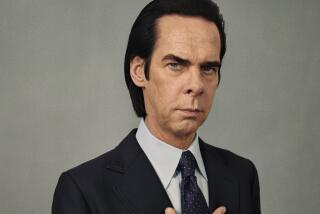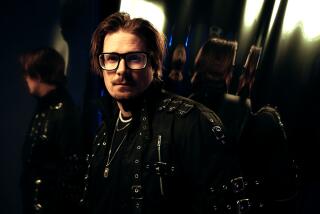Book review: ‘See a Little Light: The Trail of Rage and Melody’ by Bob Mould with Michael Azerrad
Any number of veterans of the punk and post-punk campaigns of the 1980s could pack a memoir with endless drives in the van, bad food and bad contracts, shoestring recording sessions, hellhole nightclubs, sleeping on floors and all the other genre touchstones.
A select few could also explore the conflicts, rewards and drawbacks of wider popularity, and the challenges of sustaining a musical life into advanced adulthood.
But there’s only one who could do all that and also describe dealing with his unresolved homosexuality and, why not, going to work plotting the story lines in professional wrestling.
Those last two elements definitely distinguish Bob Mould’s autobiography from the predictable pack, and should keep readers from feeling they’re on an endless van ride themselves.
Events and characters do tend to blur together in this excessively detailed account of the musician’s life, but while some selectivity might make for a better read, the relentless accumulation of minutiae is true to his obsessive nature.
A self-described “screaming hulk” as co-leader of the Minneapolis trio Hüsker Dü, Mould was one of the key architects of the American indie-rock community, and of the musical foundation that would form the core of ‘90s alternative rock.
Mould traces the cathartic rage of his early music to the dysfunction of his childhood in upstate New York, where his father’s physical and emotional bullying — as well as a dark secret discovered much later — locked the youngster into a set of coping behaviors that stayed with him and led to many bad decisions as an adult.
With a high IQ and a mind that processed numbers like a calculator, Mould was focused and controlling, obsessive-compulsive and clinically depressed. He started drinking at 13 and didn’t stop for a day until he quit cold turkey 12 years later.
It’s no surprise, then, that self-analysis and DIY psychology occupy much of “See a Little Light,” whose overriding theme is the author’s struggle to break down his defenses and reinvent himself.
Mould isn’t a warm and fuzzy companion on this journey. Thorny, earnest and intense, he nonetheless elicits sympathy as he figures out how to deal with people and with his own nature. The breakups of bands, business associations and relationships are seen from his perspective, but even when he explains his actions, he never pretends he’s easy to get along with.
Considering all the issues he was coping with, it’s amazing that Mould managed to conduct two long-term romantic relationships. His conflicts over his sexual orientation yield the book’s most intimate moments, and the days when he finally embraces “the life” and starts a crash course in gay culture — awkwardly and at the advanced age of 38 — are amusing and touching.
Attending that rite of passage is a musical evolution whose contour follows the changes in his personal life, from the rage and thrash spewed by a reckless, nihilistic kid to the more reflective pop of a mellowing post-adolescent. More permutations ensued, most notably his turn into electronic music that he took after entering the gay world. “In order to have a new life, I had to have new music,” he writes.
For someone whose music is so impassioned, Mould relays all this with surprising reserve. His prose is straightforward, the voice informal, without flourishes — an unadorned form that may be a product of his years as a blogger. The diary-like structure tends to go dry, as one incident follows another, often with no resonance on the bigger story. Mould would never make music this short on dynamics.
The exhaustive reports on recording sessions, concerts, et al. might be a service for his most devoted fans, but can be a bit much for more general readers looking to sample the thrill of the ride without signing on for the long haul.
Students of the era, though, should get a kick from Mould’s firsthand look at life in the post-hardcore trenches, including his dealings with Black Flag’s SST record label and his relationship with Hüsker Dü’s other creative force, Grant Hart.
There are also encounters with some of his heroes (lunch with Pete Townshend! Knife-throwing with William Burroughs!), as well as unknowns with a future (New Jersey rock club bartender one decade, Jon Stewart the next.)
In the end, Mould seems resolved and renewed, living in San Francisco and working on his third serious relationship while making music with the young punk-steeped band No Age. The members of the Los Angeles duo were still in diapers when Hüsker Dü’s epic album “Zen Arcade” came out, Mould notes, enjoying the validation and suggesting that melody has finally supplanted the rage.
More to Read
Sign up for our Book Club newsletter
Get the latest news, events and more from the Los Angeles Times Book Club, and help us get L.A. reading and talking.
You may occasionally receive promotional content from the Los Angeles Times.







